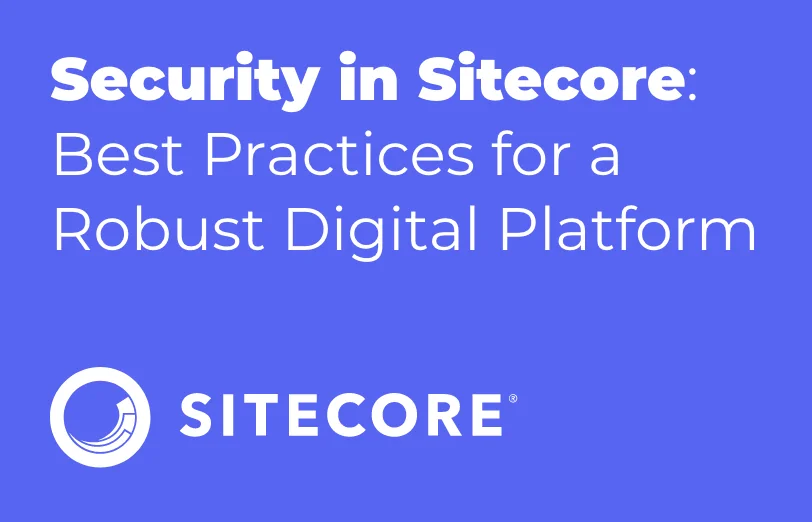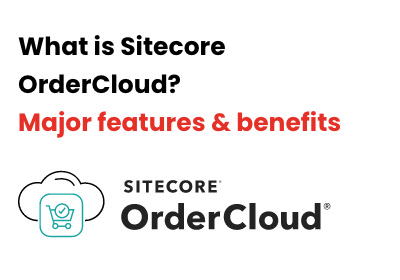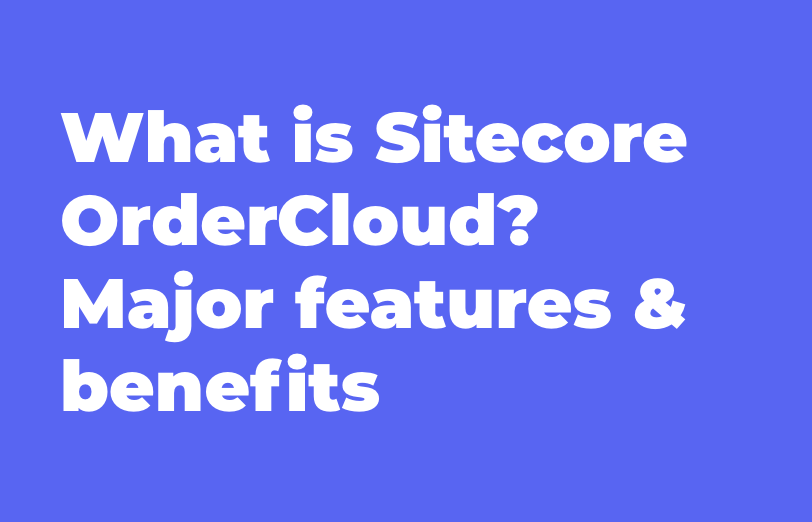Today where organizations heavily rely on web applications, security becomes a top priority.
Through this blog, we will explore the best practices for fortifying the security of your
Sitecore environment. By understanding the security landscape and implementing proactive
measures, organizations can ensure a robust defense against potential threats and deliver a
secure digital experience for their users.
Let us understand first what is the security scenario within which Sitecore operates.
Given its role as a content management system (CMS) and digital experience platform (DXP),
Sitecore handles a vast array of data, making it an attractive target for cybercriminals.
Some of the common security threats include:
Data Breaches: Unauthorized access to sensitive user data, such as personal information,
login
credentials, and payment details.
Cross-Site Scripting (XSS): Injecting malicious scripts into web pages that can be
executed by
other users' browsers.
Cross-Site Request Forgery (CSRF): Forcing users to perform unintended actions without
their
consent.
Injection Attacks: Injecting malicious code or SQL queries into input fields to manipulate
data
or gain unauthorized access.
Brute Force Attacks: Repeatedly attempting to gain access by trying various username and
password
combinations.
Best practices for a Robust Digital Platform in Sitecore
Security
Regular Software Updates and Patching
Keeping the Sitecore installation up-to-date is one of the most fundamental steps in ensuring
security. Sitecore regularly releases updates and patches that address known vulnerabilities and
improve overall system security. Organizations should establish a routine for applying these
updates promptly to reduce the risk of exploitation.
Secure Configuration
Sitecore offers a range of configuration options to tailor the platform to specific business
needs. However, it's essential to configure Sitecore securely by following best practices.
This includes disabling unnecessary features, setting appropriate access controls, and
implementing secure defaults. Organizations should perform regular security reviews of their
Sitecore configuration to identify and rectify any potential vulnerabilities.
User Authentication and Authorization
Effective user authentication and authorization mechanisms are critical in preventing
unauthorized access to the Sitecore platform. Organizations should enforce strong password
policies, implement multi-factor authentication (MFA) for enhanced security, and regularly
review user roles and permissions to ensure they align with business requirements.
SSL/TLS Encryption
Encrypting data in transit is a non-negotiable aspect of web security. Implementing SSL/TLS
encryption ensures that data exchanged between users and the Sitecore platform remains
confidential and secure. Organizations should obtain and install valid SSL certificates,
configure Sitecore to use HTTPS, and enforce secure communication practices.
Secure Development Practices
Adhering to secure coding practices is essential to minimize the risk of introducing
vulnerabilities during the development phase. Sitecore developers should undergo training on
secure coding practices, perform regular code reviews, and utilize security tools to identify
and remediate potential security issues early in the development lifecycle.
Monitoring and Logging
Implementing robust monitoring and logging mechanisms allows organizations to detect and respond
to security incidents effectively. Sitecore provides logging capabilities that can be configured
to capture relevant security events.
Integrating Sitecore logs with a centralized log management system enables timely identification
of suspicious activities and facilitates forensic analysis in the event of a security incident.
Backup and Disaster Recovery
Regularly backing up Sitecore data and configurations is crucial for ensuring business continuity
in the event of a security incident or data loss. Organizations should establish a comprehensive
backup and disaster recovery plan, including off-site storage of backups and regular testing to
validate the restoration process.
Security Training and Awareness
Human error is a significant contributor to security vulnerabilities. Providing security training
and awareness programs for Sitecore administrators, developers, and other stakeholders is
essential. This ensures that personnel are knowledgeable about security best practices,
recognize potential threats, and follow secure procedures in their day-to-day activities.
Conclusion
Securing a Sitecore environment is a shared responsibility between Sitecore developers,
administrators, and the organization as a whole. By adopting a proactive and comprehensive
security approach, organizations can significantly reduce the risk of data breaches,
unauthorized access, and other cyber threats.
Regular updates, secure configuration, robust authentication mechanisms, and a commitment to
secure development practices are foundational elements in building a resilient Sitecore
platform.
The best practices explained in this blog provide a solid foundation for enhancing security in
Sitecore. As the digital landscape continues to evolve, staying vigilant and adapting security
measures to emerging threats will be crucial for maintaining a secure and resilient digital
platform.
BACK TO SERVICE LIST
Sitecore Module Development Add new features, extend new features, or even replace, supplement and provide new functionality to Sitecore. Sitecore CMP & MRM Through the Sitecore CMP & MRM, drive execution, workflow, operations and processes of your entire marketing team. Sitecore Ordercloud Create a dynamic eCommerce platform and future-proof your business for B2B, B2C, B2X or any other marketplace business model. Sitecore Discover Provide real-time, personalized search results and recommendations for every individual shopper, all in one place.
MAIN MENU














